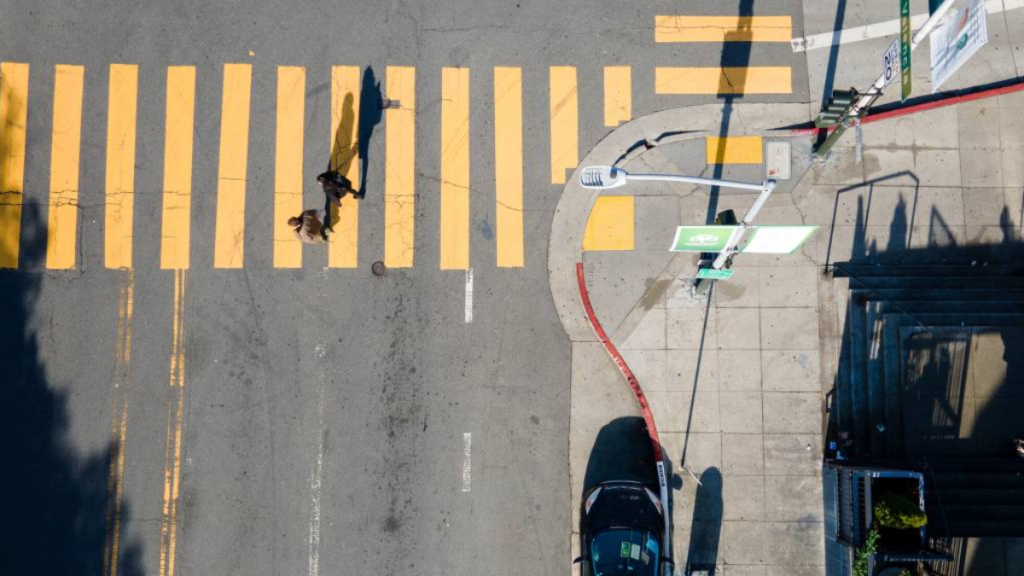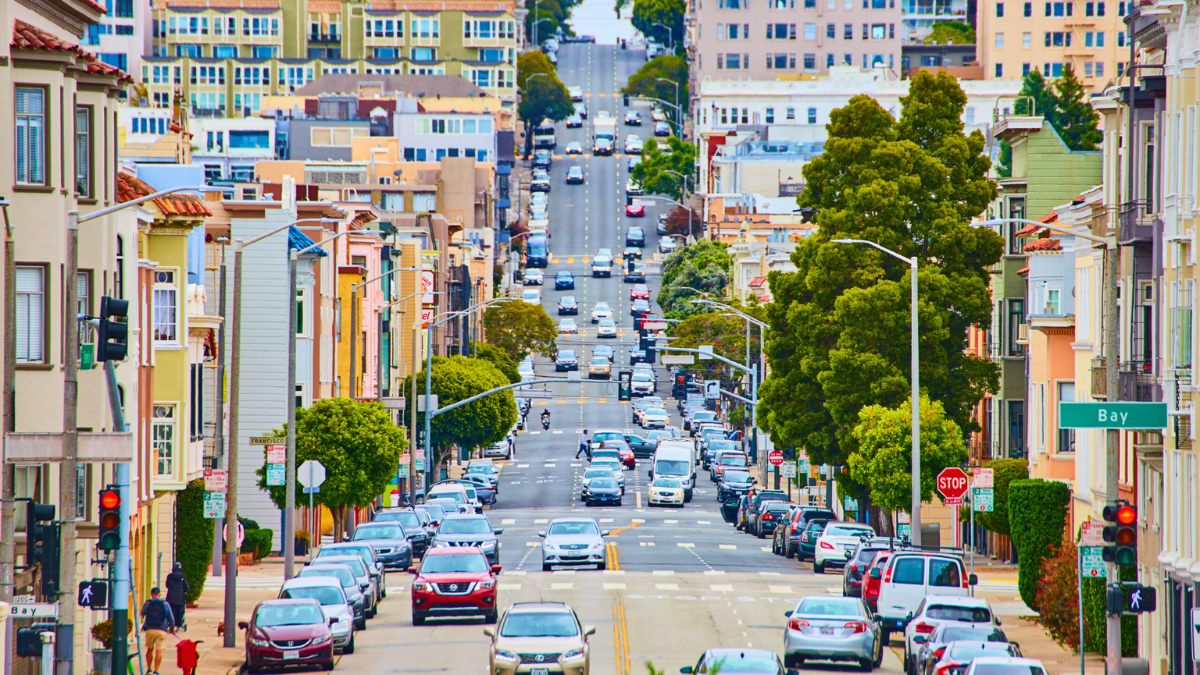SACRAMENTO, CA — In a major push to improve pedestrian safety and reduce traffic fatalities, California has enacted a new statewide “daylighting” law that restricts parking near intersections and crosswalks. The law, which went into effect January 1, 2025, aims to give drivers better visibility at corners—where many pedestrian collisions occur—and aligns California with a growing number of jurisdictions adopting this safety practice.
Daylighting refers to the removal of visual obstructions—such as parked vehicles—near crosswalks and intersections so drivers and pedestrians can see each other more clearly.
The practice is widely endorsed by traffic safety experts and organizations like the National Association of City Transportation Officials (NACTO) and Vision Zero Network.
What the New Law Does
Under the new California law, vehicles are prohibited from parking within 20 feet of any marked or unmarked crosswalk at a right-angle intersection unless otherwise indicated by signs or local ordinances. The goal is to create a clear “line of sight” for approaching drivers, especially in urban and high-traffic areas.
Specifically, the law:
- Bans vehicle parking within 20 feet of a crosswalk at intersections with stop signs or traffic signals.
- Applies to both marked and unmarked crosswalks.
- Empowers local municipalities to implement stricter setbacks if desired.
- Allows exceptions for loading zones and accessibility needs, provided adequate visibility remains.
Violators may be cited with a parking fine and could have their vehicles towed depending on local enforcement policies.
Why It Matters
According to the California Office of Traffic Safety, pedestrian deaths accounted for nearly 25% of all traffic fatalities in the state in 2023—well above the national average. Many of these fatalities occurred at intersections, where visual barriers such as parked SUVs or delivery vans block the view of both drivers and pedestrians.
“Too many lives are lost at street corners where a parked car creates a blind spot,” said Governor Gavin Newsom during a press conference announcing the law. “This law is a simple, low-cost way to make streets safer for everyone—especially children, seniors, and people with disabilities.”
A 2022 study by the Insurance Institute for Highway Safety (IIHS) found that daylighting reduced pedestrian crashes at intersections by as much as 30% in cities where it was enforced.
Local Reactions and Implementation
Municipalities across California are already adjusting signage and curb markings to comply with the new regulation. San Francisco and Los Angeles, which had previously piloted daylighting in select neighborhoods, have praised the law as a commonsense enhancement to traffic engineering.
“We’ve seen firsthand how daylighting makes a difference,” said Jeffrey Tumlin, Director of the San Francisco Municipal Transportation Agency (SFMTA). “When drivers can actually see a pedestrian before they enter the crosswalk, it significantly reduces the chance of a crash.”
In Los Angeles, the Department of Transportation has started a phased rollout of curb painting, installing white or red paint at curb edges to signal no-parking zones near intersections.
The law also helps standardize what was previously a patchwork of local rules. Before this legislation, some cities had daylighting ordinances, while others had none—creating confusion and inconsistent enforcement.

Support from Safety Advocates
The law has drawn strong support from pedestrian safety advocates, many of whom have pushed for daylighting reforms for years. Organizations such as Walk San Francisco, Streets Are For Everyone (SAFE), and the California Bicycle Coalition say the law is a much-needed step in addressing the state’s pedestrian safety crisis.
“This is one of the lowest-cost and most effective ways to save lives on our roads,” said Cathy DeLuca, Policy and Program Director at Walk SF. “It’s about prioritizing people over parked cars.”
Supporters also note that the law supports California’s broader Vision Zero initiative, which aims to eliminate traffic deaths and serious injuries on roadways.
Concerns and Challenges
Not everyone is on board, however. Some residents and small business owners have expressed concerns about the potential loss of parking—especially in dense urban areas where street parking is already scarce.
“We support safer streets, but we need solutions that also consider the needs of customers and deliveries,” said Ricardo Martinez, owner of a corner café in Oakland. “Losing even one or two spaces near a busy intersection can hurt foot traffic.”
In response, state transportation officials stress that the law does allow for flexibility and localized decision-making. Cities can apply for exceptions or implement loading zones in areas with special needs—as long as sight lines are preserved.
Educational Outreach and Enforcement
The California Highway Patrol and local police departments will be working to educate the public during the law’s early months. Rather than immediate ticketing, many jurisdictions will begin with warning notices and outreach campaigns.
Caltrans has also launched a statewide “See and Be Seen” campaign to raise awareness about daylighting and pedestrian visibility. The campaign includes:
- Informational posters and online ads
- Driver and pedestrian safety tips
- Partnerships with schools, community centers, and senior organizations
“Education is key to ensuring this law has the intended impact,” said CHP Commissioner Sean Duryee. “We’re not just changing where people park—we’re changing how they think about safety at intersections.”
Looking Ahead
Experts say the success of the law will depend on public buy-in, consistent enforcement, and ongoing street design improvements. While daylighting alone won’t solve all of California’s pedestrian safety challenges, it’s a strong start.
“This is about building safer, more livable communities for everyone,” said Governor Newsom. “A clear corner could mean a clear path to saving a life.”
For more information on California’s new daylighting law and pedestrian safety resources, visit:
California Office of Traffic Safety – https://www.ots.ca.gov and Caltrans – https://dot.ca.gov
Disclaimer – Our team has carefully fact-checked this article to make sure it’s accurate and free from any misinformation. We’re dedicated to keeping our content honest and reliable for our readers.
